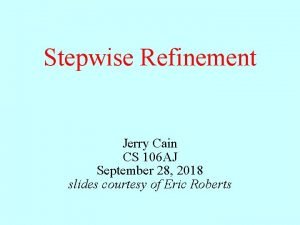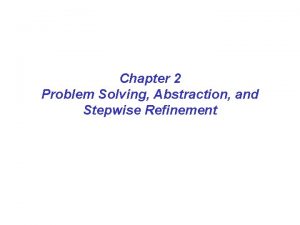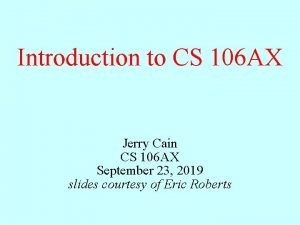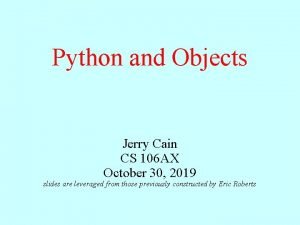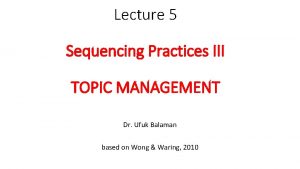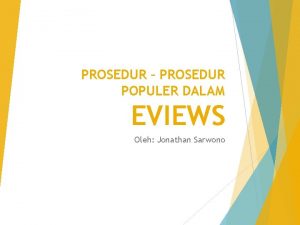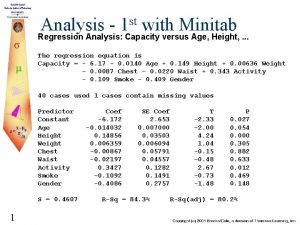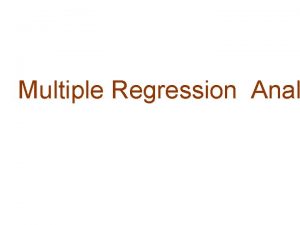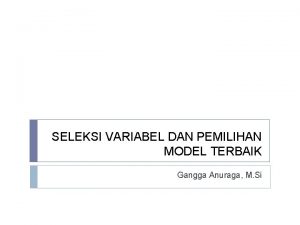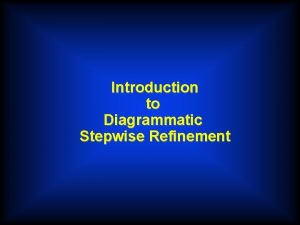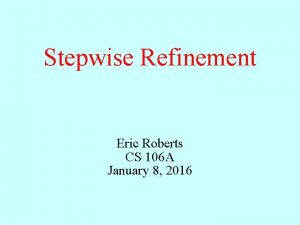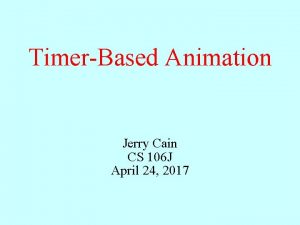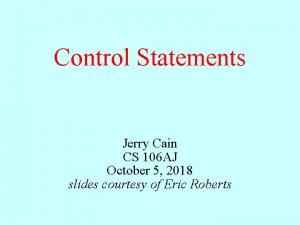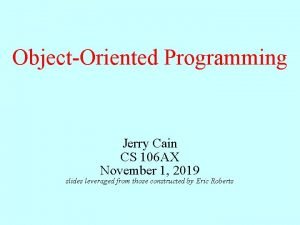Stepwise Refinement Jerry Cain CS 106 J April









- Slides: 9

Stepwise Refinement Jerry Cain CS 106 J April 7, 2017

Stepwise Refinement • The most effective way to solve a complex problem is to break it down into successively simpler subproblems. • You start by breaking the whole task down into simpler parts. • Some of those tasks may themselves need subdivision. • This process is called stepwise refinement or decomposition. Complete Task Subtask #1 Subtask #2 Subsubtask #2 a Subsubtask #2 b Subtask #3

Criteria for Choosing a Decomposition 1. The proposed steps should be easy to explain. One indication that you have succeeded is being able to find simple names. 2. The steps should be as general as possible. Programming tools get reused all the time. If your methods perform general tasks, they are much easier to reuse. 3. The steps should make sense at the level of abstraction at which they are used. If you have a method that does the right job but whose name doesn’t make sense in the context of the problem, it is probably worth defining a new method that calls the old one.

Exercise: Banishing Winter • In this problem (which is described in detail in Handout #4), Karel is supposed to usher in springtime by placing bundles of leaves at the top of each “tree” in the world. • Given this initial world, the final state should look like this: 6 + + + + 5 + + + + 4 + + + + 3 + + + + 2 + + + + + + + 1 2 3 4 5 6 7 8 9 10 11 12 13 14

Understanding the Problem • One of the first things you need to do given a problem of this sort is to make sure you understand all the details. • According to the handout, Karel stops when it runs out of beepers. Why couldn’t it just stop at the end of 1 st Street? 6 + + + + 5 + + + + 4 + + + + 3 + + + + 2 + + + + + + + 1 2 3 4 5 6 7 8 9 10 11 12 13 14

The Top-Level Decomposition • You can break this program down into two tasks that are executed repeatedly: � – Find the next tree. � – Decorate that tree with leaves. 6 5 4 3 2 1 1 2 3 4 5 6 7 8 9 10 11 12 13 14

Preconditions and Postconditions • Many of the bugs that you are likely to have come from being careless about the conditions under which you use a particular method. • As an example, it would be easy to forget the turn. Left call at the end of the add. Leaves. To. Tree method. • To reduce the likelihood of such errors, it is useful to define pre- and postconditions for every method you write. – A precondition specifies something that must be true before a method is called. – A postcondition specifies something that must be true after the method call returns.

Algorithmic Programming in Karel • In computer science, a well-specified strategy for solving a problem is called an algorithm. • The goal for the rest of this lecture is to write a program that solves a maze using the right-hand rule:

The End
